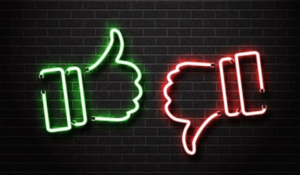Communication is the lifeblood of any thriving organization. It’s the thread that weaves together ideas, collaboration, and productivity. Yet, despite its undeniable significance, communication breakdown can occur, leading to conflicts and decreased efficiency.
In today’s fast-paced and interconnected world, where communication channels have multiplied and technology constantly evolves, the potential for breakdowns has become even more pronounced. Whether it’s misinterpretation of messages, lack of active listening, or cultural and language barriers, these obstacles can impede progress and hinder relationships within teams and across departments.
However, the good news is that breakdown of communication can be addressed and repaired. By understanding the root causes, implementing effective strategies, and nurturing a culture of open and respectful dialogue, organizations can restore clarity, foster strong connections, and unlock the full potential of their teams.
In this blog, we will delve into the intricacies of communication breakdown, exploring its impact on workplaces and providing practical insights to overcome these challenges. We will uncover the common pitfalls, examine real-world case studies, and offer actionable tips and techniques to facilitate effective communication in a variety of settings.
We hope this blog helps your company bridge the gaps in communication, strengthen relationships, improve collaboration, and empower individuals to express their ideas with clarity and confidence.
Communication breakdown meaning:
Breakdown of communication refers to a situation where there is a failure or interruption in the exchange of information, resulting in a lack of understanding, misinterpretation, or complete breakdown of communication between individuals or within a group. It occurs when the intended message is not effectively conveyed or received, leading to confusion, conflicts, or inefficiencies.
Here are a few communication breakdown examples:
1. Misunderstanding due to unclear instructions:
Imagine a manager assigning a task to an employee, but failing to provide clear and detailed instructions. As a result, the employee may misinterpret the requirements, leading to a different outcome than expected. The lack of clarity in communication causes confusion and can potentially delay or compromise the project. This is one of the most common communication breakdown examples.
2. Nonverbal cues and body language:
Communication is not solely reliant on words. Nonverbal cues such as facial expressions, gestures, and tone of voice play a significant role. For instance, if a team member is presenting an idea with enthusiasm and gestures that indicate excitement, but their colleagues misinterpret their gestures as arrogance, it can lead to breakdown of communication and increased misunderstanding.
3. Language barriers:
In multicultural companies, language differences can lead to communication breakdowns. For instance, if a team member whose first language is not English, receives an email with complex jargon, they might struggle to understand the message and may be hesitant to seek clarification. Thus, leading to confusion and potential errors.
4. Lack of feedback and active listening:
Effective communication involves active listening and providing timely feedback. If a team member fails to actively listen during a meeting or discussion, they may miss critical information or fail to understand the speaker’s perspective. This can lead to breakdown of communication further resulting in a lack of alignment with the team’s mission.
5. Communication overload and information overload:
In today’s fast-paced work environment, where multiple messages, emails, and notifications are constantly bombarding individuals, important information can get lost or overlooked. In such cases, people may not effectively process and prioritize messages leading to another form of breakdown of communication. This results in missed deadlines, incomplete tasks, or even workplace conflicts.
How to reverse the negative impact of breakdown of communication?
It is important to address and mitigate communication breakdowns by fostering a culture of open communication, active listening, and clarifying expectations. By promoting clear communication, encouraging feedback, and recognizing the importance of nonverbal cues and language diversity, organizations can minimize the occurrence of breakdown of communication and enhance collaboration and productivity.
Understanding the causes of communication breakdown
Effective communication is critical for the success of any organization. However, breakdowns of communication can occur, leading to misunderstandings, mistakes, and even conflicts. Before we can begin to solve the problem, it is important to understand what causes communication breakdown.
Following are some of the primary factors:
Lack of clarity in messages
One of the most common causes of communication breakdown is a lack of clarity in messages. Misunderstandings occur when messages are not clear and concise. Communication breakdown happens when the sender fails to communicate the correct message.
This can happen due to various reasons.
- Using heavy words that the listener does not understand
- Not providing enough context when speaking or presenting
- Not communicating clearly or concisely
For example, imagine a manager sending an email to their team, asking them to complete a project by the end of the week. However, the email is not clear about the specific tasks that need to be done. Also, it neither specifies the deadline, nor the expected outcome. That’s again a breakdown of communication. As a result, team members may end up working on different tasks, missing the deadline completely, or producing inferior work.
Cultural differences
In today’s globalized world, many organizations work in a multicultural environment. While this brings many benefits, it also results in communication breakdown due to differences in language, traditions, and expectations. What might seem clear to one person may not be the same for another. For example, in some cultures, it is impolite to say “no” directly. So people use vague language or avoid answering directly. This can lead to misunderstandings and confusion.
Moreover, cultural differences can also affect non-verbal communication, such as body language and facial expressions. For example, in some cultures, maintaining eye contact is a sign of respect and attentiveness. While in others, it can be seen as confrontational or disrespectful.
Ineffective communication channels
Using poor communication channels can make it difficult to send and receive messages, resulting in breakdown of communication. These channels include emails, messaging apps, and other mediums that are not tailored to the needs of the organization and its employees.
For example, if you rely solely on email for communication, important messages may get lost in overflowing inboxes. Similarly, if you use a messaging app that is not user-friendly, employees may struggle to communicate effectively.
It is important for organizations to evaluate their communication channels regularly and ensure that they are efficient, effective, and user-friendly. This can involve using different channels for different types of messages. And providing training on how to use the channels effectively, and encouraging feedback from employees.
Emotional barriers
Emotions can play a significant role in communication breakdown. When employees are stressed or otherwise affected by their surroundings, they may struggle to form coherent thoughts and communicate clearly. For example, if an employee is going through a personal crisis, they may find it difficult to focus on work-related tasks. They may also not communicate effectively with their colleagues.
Moreover, emotions can also affect how messages are received and interpreted. For example, if a manager provides constructive feedback, but the employee feels offended, the feedback may get lost totally. Similarly, if an employee receives a message that triggers a negative emotional response, they may be unable to respond positively.
To avoid a breakdown of communication, organizations can address emotional barriers by providing support and resources to employees who are going through any challenge. This can involve offering counseling services, flexible work arrangements, or simply creating a supportive work environment. Additionally, organizations can provide training on emotional intelligence and effective communication to help employees manage their emotions and communicate effectively.
Identifying signs of communication breakdown
Communication is an essential aspect of any workplace, and when it breaks down, it can lead to several problems. There are several signs which show there is a breakdown of communication. The following are some of the most common ones:
Increased conflicts and misunderstandings
Conflicts in the workplace are often caused by a lack of understanding and communication, which leads to misunderstandings. For instance, if an employee is not instructed clearly, they may end up messing up the task. This can lead to conflicts with peers or superiors. It is therefore essential to ensure that communication is clear and concise to avoid such misunderstandings.
Low employee morale
Communication breakdown can result in low morale, leading to employees feeling undervalued, misunderstood, and unsupported. When employees feel unheard or that their opinions don’t matter, they may become disengaged and lose motivation to work. Employers can avoid this by encouraging open communication and creating a workplace culture that values employee feedback.
Reduced productivity
When communication is poor, it can lead to delays, lower quality of work, and missed deadlines, reducing overall productivity. Unclear instructions can lead to wasted time and task delays as employees struggle to understand expectations. Employers can improve productivity by ensuring that communication is clear, timely, and relevant.
High employee turnover
Communication breakdown leads to employees feeling unheard, undervalued, and seeking opportunities elsewhere. Employers can reduce turnover by valuing and supporting employees.
Communication Breakdown Case Studies
These case studies are valuable tools that will help you understand real-world examples with practical insights into various situations. Through these scenarios, our aim is to offer valuable insights, promote analytical thinking, and contribute to your and your organization’s professional development and growth.
Case Study 1: Email Misinterpretation
In a multinational company, a project team based in different countries was working on a critical client proposal. The team leader, located in the head office, sent an email to the team members asking for specific data to be included in the proposal. However, due to language and cultural differences, one team member misinterpreted the email and provided incorrect information. This led to a breakdown in communication, as the team leader discovered the error only after the proposal was submitted. The misinterpretation caused frustration, delays, and a loss of credibility with the client.
Lessons learned:
In cross-cultural communication, it is essential to use clear and concise language, provide context, and encourage open dialogue to ensure shared understanding. Regular check-ins, clarifications, and double-checking of critical information can help prevent misinterpretations and minimize communication breakdowns.
Case Study 2: Lack of Feedback and Collaboration
In a software development team, a project manager assigned tasks to individual developers without seeking their input or involving them in the decision-making process. As a result, developers felt disconnected, and undervalued, and their expertise was underutilized. The lack of feedback and collaboration created a communication breakdown, leading to low morale, decreased productivity, and a decrease in the quality of the final product.
Lessons learned:
Effective communication involves active engagement, listening to different perspectives, and fostering a collaborative environment. Involving team members in decision-making, soliciting feedback, and recognizing their expertise can enhance communication, improve morale, and foster a sense of ownership and commitment to the project.
Case Study 3: Ineffective Meeting Communication
In a marketing agency, regular team meetings were conducted to discuss project updates, brainstorm ideas, and allocate tasks. However, these meetings often lacked structure and clear communication guidelines. As a result, discussions were scattered, important points were missed, and decisions were not clearly documented. This led to confusion, duplication of work, and a lack of accountability among team members.
Lessons learned: Effective meeting communication requires setting clear objectives, establishing an agenda, and providing sufficient time for discussion and decision-making. Encouraging active participation, summarizing key points, and assigning action items can ensure that everyone is on the same page, leading to better collaboration, improved productivity, and reduced communication breakdowns.
Strategies for reducing breakdown of communication
Effective communication is crucial for the success of any organization. It helps to minimize misunderstandings and promotes collaboration and productivity. Improving communication breakdown involves creating an environment that is conducive to meaningful dialogue.
The following strategies can help:
Establishing clear communication guidelines
Creating clear communication guidelines is an essential step in improving communication in an organization. These guidelines should clearly define communication expectations, including the tone, language, formality, and methods used. It sets the required standards for all employees and helps to minimize potential misunderstandings. Clear guidelines also ensure that everyone is on the same page, and communication is consistent throughout the organization.
For instance, if you prefer formal communication, advise your employees to use formal language when communicating professionally. Also specify in your communication guidelines, the preferred method of communication, whether it’s email, phone, or face-to-face meetings.
Encouraging open dialogue and feedback
Open dialogue and feedback are effective for improving communication. An open-door policy fosters transparency and trust. Employees should share ideas, suggestions, and concerns without judgment, creating a culture of openness.
Regular feedback sessions allow employees to express opinions and concerns. You can conduct these formal or informal sessions, collect valuable feedback, and address them appropriately.
Implementing effective communication tools
Another effective strategy for improving communication in an organization is to implement effective communication tools. Organizations should provide tools like project management software and instant messaging platforms that support clear communication. Utilizing these tools reduces errors, and misunderstandings, and increases productivity.
For instance, project management software can help teams collaborate on projects and track progress in real time. This reduces the need for lengthy email threads. You can select these tools based on your organization’s specific needs. Just remember to keep them user-friendly and accessible to all employees.
Providing communication training
Regular communication training is an essential step in improving communication in an organization. It helps employees develop effective communication skills tailored to their roles. The training includes techniques for active listening, empathy, and clear messaging.
For instance, you can train client-facing employees in active listening and empathy. And you may train other internal employees in giving and receiving feedback. You must conduct this training regularly to ensure your employees are up to date with the latest communication techniques.
Using an app for employee communication
Using an app for employee communication can bring several benefits to an organization. Here’s how it helps:
- An employee communication app enables instant and real-time communication among team members.
- Employees can share files, exchange ideas, provide feedback, and work together on documents in a centralized and easily accessible platform.
- Mobile connectivity of an app helps employees stay connected and informed even when they are on the go or working remotely.
- Serves as a centralized hub for important information, announcements, updates, and company news. It reduces the chances of miscommunication or missed messages.
- Promotes employee engagement through discussion forums, surveys, polls, and social networking elements.
- Offers analytics to track metrics like engagement rates, message open rates, and employee feedback. This verifies communication effectiveness and helps your managers make data-driven improvements.
- Provide a secure platform for confidential conversations and sensitive information sharing. Encryption, user authentication, and data protection measures are standard implementations in HubEngage. These ensure the privacy and integrity of your internal communications.
Conclusion: Open Communication is Critical to Productivity
Communication breakdowns can lead to ineffective work processes, misunderstandings, and low employee morale. It hinders productivity, creates conflicts, and erodes trust. By understanding the causes and implementing corresponding strategies, employers can create an environment of clear and open communication.
Clear and open communication fosters collaboration, minimizes errors and strengthens relationships among team members. Addressing communication breakdowns can lead to improved productivity, better decision-making, and a positive work environment. By actively listening, seeking clarification, and promoting open dialogue, organizations can mitigate the impact of communication breakdowns and unlock the full potential of their teams. Remember, effective communication is not a one-time effort but an ongoing practice that requires attention and investment. Embracing the importance of communication and continuously refining communication skills will yield significant benefits in the workplace.













